A bright, beautiful sunny morning is the perfect time to run for some. For others, something about a grey, cloudy morning and the promise of rain makes us just as eager to hit the road or trail. Grey skies and a drizzle or even a downpour are the perfect time to go for a run. While we encourage everyone not to let rain get in the way of their favorite activity, we also encourage runners to keep safe as possible no matter the weather.
We have a few expert tips to ensure running safety in rainy conditions, whether you enjoy a drizzly run or a downpour.
Is Running in the Rain Safe?
Ask any level of athlete or expert, and they will undoubtedly agree it is perfectly safe to jog or run in the rain. However, there are a few circumstances where it is better not the brave the weather.
An overcast day with forecasts of rain or showers is fine, but should thunderstorms, heavy wind, and freezing rain, hail, or freezing conditions be predicted, it's better to stay inside or hit the treadmill. Storms often result in unpredictable situations like lightning; heavy winds could mean flying debris, creating unsafe run conditions.
Is Running in the Rain Good For You?
While it can be difficult for some of us to take that first step in less-than-perfect weather, so long as storms, heavy wind, or freezing conditions aren't predicted, running during a rainy day can be pretty rewarding and possibly even beneficial!
Keep Cool and Run On
Running in the rain may help you run faster. Your performance can suffer when temps are high on a clear sunny day. Ask a runner that pushes through in the middle of summer or during the hottest temps of the year where they live, and they can tell you running in the heat, while rewarding, can take a lot out of you and make your performance suffer. Our body temperature rises as we run; the warmer it is, the more we sweat to cool off.
However, rain acts as a natural cooling system keeping our temps lower during the rain. Remember that body heat loss intensifies in a lower-temperature environment, and energy expenditure rises in rainier conditions. A rainy jog will burn more calories than a temperate jog if you match your usual speed, which is good news for achieving a calorie deficit but could be bad news if you are trying to achieve a new personal best because our bodies are using extra energy to keep up.
A New Challenge
Suppose you've only ever run outside during perfect conditions. In that case, challenging yourself to run in adverse weather can help you learn to complete workout goals or reach goals such as running your first race and help you face general difficulty in your life. Our daily lives are often far from perfect, and neither is the weather. (Remember to avoid thunderstorms, heavy winds, and freezing conditions, though!)
Meditative
Have you ever used the sound of rain to calm and soothe your mind, meditate, or drift off to sleep? When you run during the rain, water is cleansing, and the sound of it can be relaxing for many of us. If you aren't trying to run in frigid temperatures, you may be finishing a drizzly spring or summer run feeling more mindful than before you began.
Rainy Run Safety
There are a few safety tips to remember when running during the rain.
- Traction. Rain can make certain surfaces slippery, decreasing tradition, so pay close attention to the surface you're running on. Take special care when encountering painted lines on asphalt or muddy trails, and be aware of flooding. We recommend shortening your stride for better control of your form and considering a pair of trail running shoes with thick lugs for a better grip on slippery surfaces.
- Temperature. Freezing conditions significantly increase the risk of hypothermia. Warm summer rain differs from a pelting, fall, or winter freezing rain. It's best to skip running outside during a wintery freezing rain. In some cases, even in 70-degree weather, runners soaked to the core have experienced symptoms of hypothermia when finishing a run. So to ensure you don't have the same experience, end your rainy run by quickly heading inside post-run to warm up or bring a change of clothes to get out of the wet clothes when finished.
- Clothing material. During a rainy run, your gear can make the difference between miserable and great. Go lightweight, reflective, moisture-wicking, and waterproof for tops and bottoms to stay relatively dry and comfortable.
- Flooding. Always check your route in advance, if possible, to see if it winds through any areas that are flooded or prone to flooding, such as river banks, before heading out. You may want to avoid those areas.
- Visibility. Depending on how hard it is raining, visibility can be significantly decreased for you and drivers on the road. You need to have a clear view of the route to quickly identify any obstacles or unsafe circumstances; we recommend wearing a protective visor to keep the rain out of your eyes. If you wear glasses, consider contacts during a run as well. Drivers must also be able to see you if you run near or along a road, so don't forget to wear something with reflective panels that make you easily spottable.
- Run Together. Join a running group if there's one near you. It helps accountability and safety when running with friends on rainy days.
- Add anti-chafe balm to your before-run routine. Apply it along the seams of clothing, arms, legs, and feet, as the additional moisture from the rain can make chafing severe.
A rainy day doesn't have to mean staying inside, using the treadmill, or heading to the gym. Don't let a slight drizzle get in your way. Be sure to keep an eye on the weather and temperature, have the right gear, stay alert, and you're good to go. Remember to avoid running in heavy wind, thunderstorms, or freezing rain!
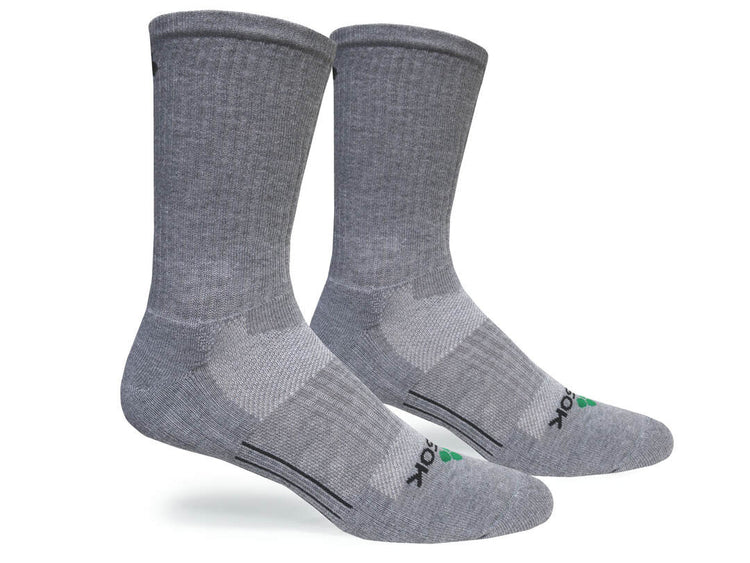
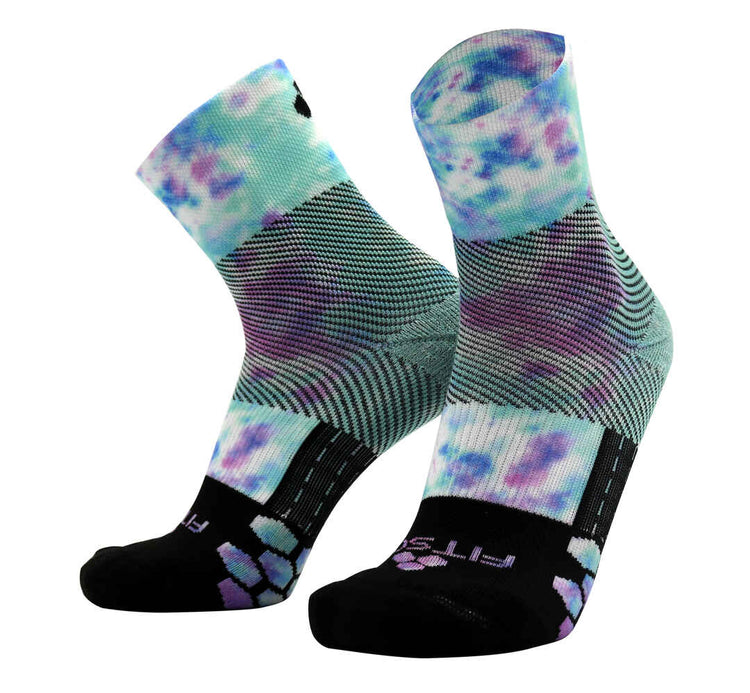
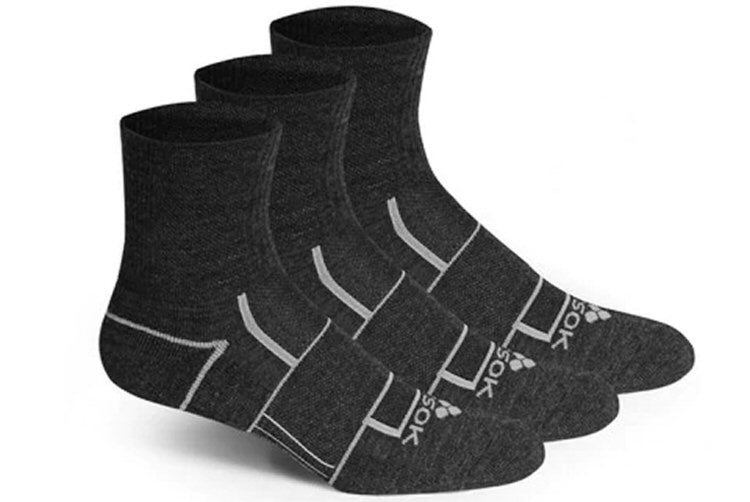
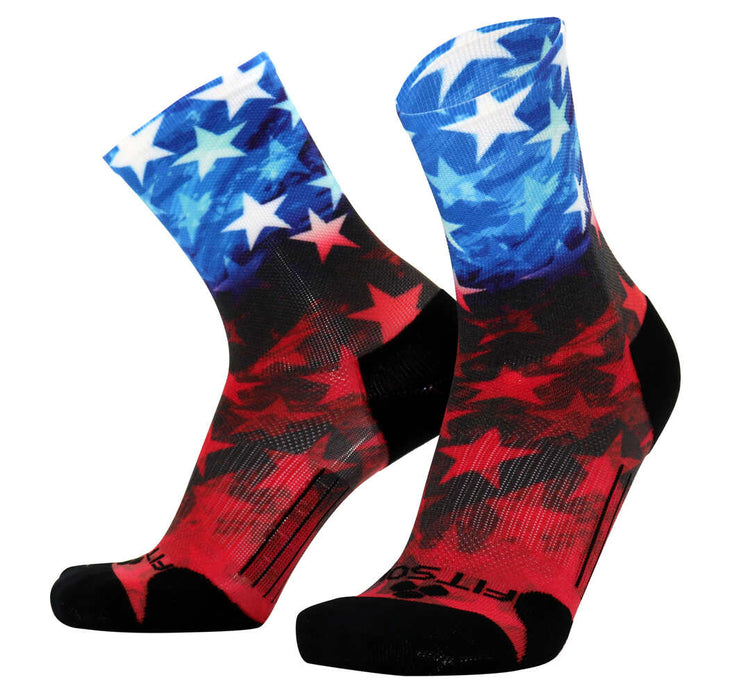
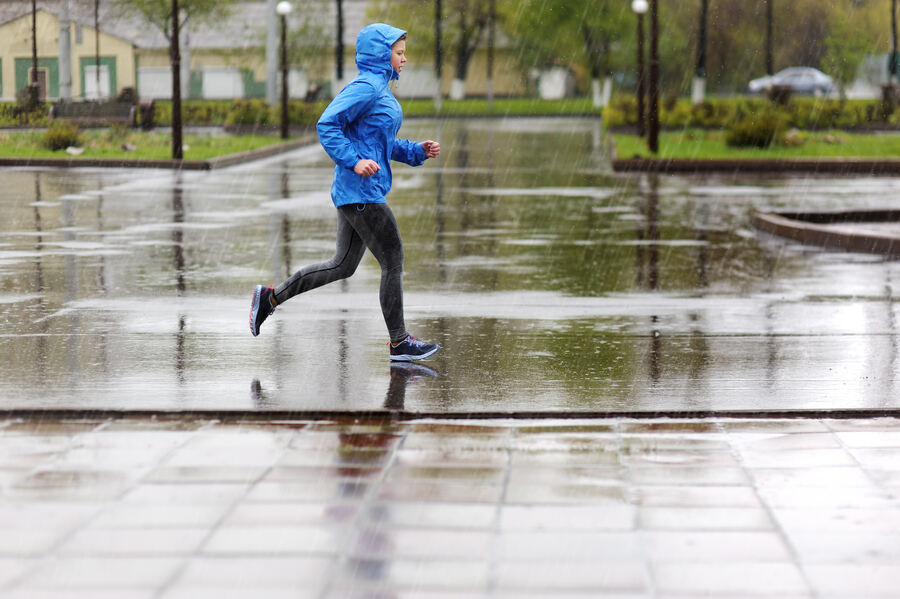


Leave a comment
This site is protected by hCaptcha and the hCaptcha Privacy Policy and Terms of Service apply.